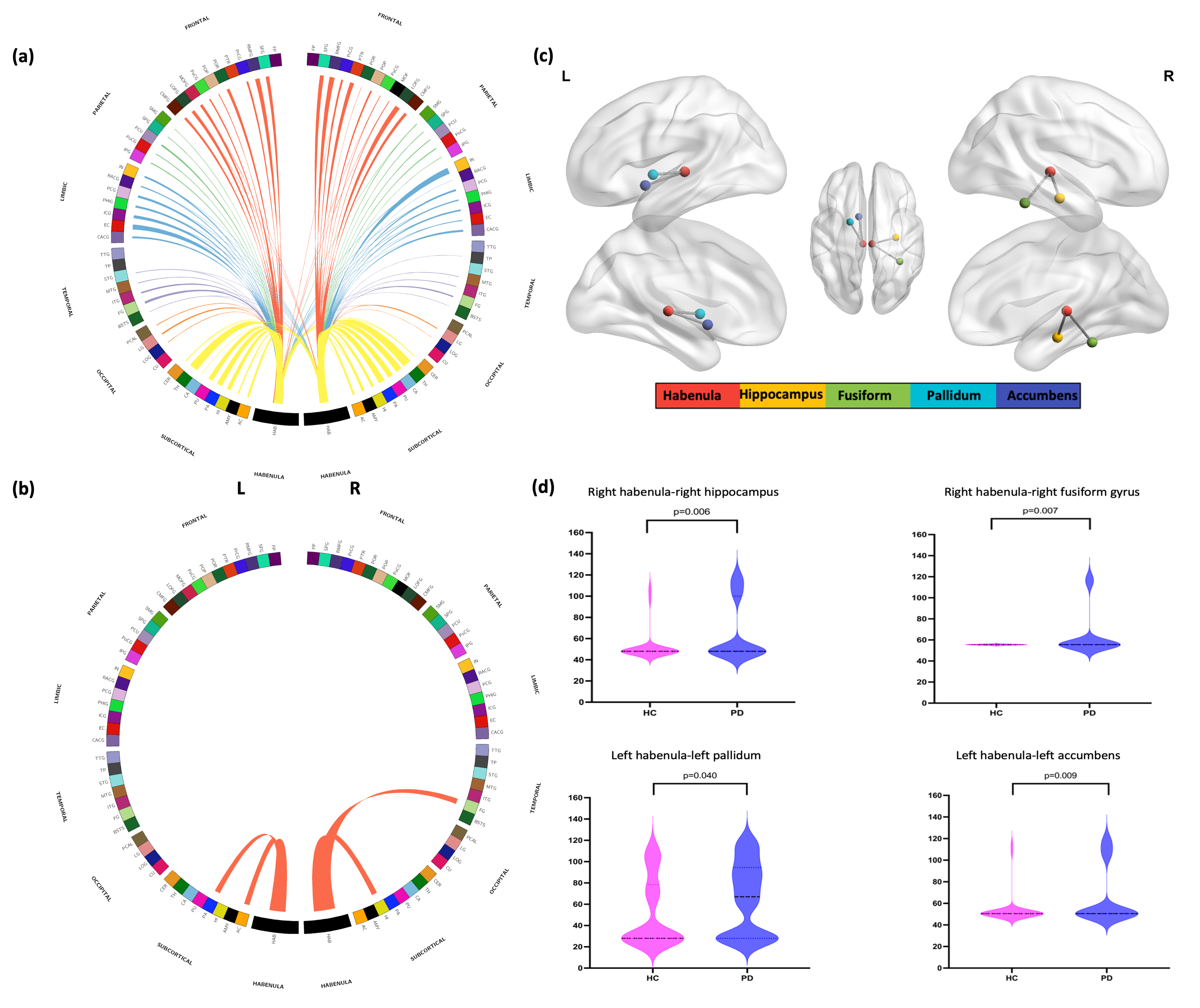Category: Parkinson's Disease: Neuroimaging
Objective: To assess if the structural connectivity of habenula (Hb) differs between Parkinson’s disease (PD) patients and healthy controls (HCs).
Background: PD is marked by both motor and non-motor symptoms, with its pathophysiology involving many neural pathways and brain regions beyond the dopaminergic system. While mainly gray matter changes have been noted, white matter changes also exist in PD. The Hb, known for its role in reward processing, mood regulation, motor functions, and cognition, is of interest due to its connection to mood disorders in PD. The potential changes in diffusion metrics and structural connectivity of the Hb in PD remain unexplored.
Method: 84 PDs and 38 HCs were recruited from Maastricht University Medical Centre. Clinical, demographic, and total Beck Depression Inventory (BDI) scores were recorded. A 7T brain MRI was conducted. Diffusion metrics and structural connectivity were evaluated.
Results: The mean diffusion metrics of Hb were not significantly different between the groups. However, in PD patients, there was an increase in mean structural connectivity from the right Hb to the right hippocampus (p=0.006) and the right fusiform gyrus (p=0.007). On the left side, enhanced connectivity was observed with the left pallidum (p=0.040) and left accumbens (p=0.009) (Figure 1). In the PD group, a significant correlation was found between the BDI total score and increased structural connectivity from the right Hb to the left cingulate isthmus (R²=0.090, p=0.003).
Conclusion: This pioneering study examines diffusion metrics and structural connectivity of Hb in PD patients using high-resolution 7T MRI. The observed increased connectivity of Hb with the hippocampus and fusiform gyrus could hint at early visuospatial and memory issues in PD patients without current complaints. The changes in connectivity between Hb-pallidum and Hb-accumbens suggest the role of Hb in motor control via dopaminergic neurons, vital for reward-based actions. Additionally, the relationship between BDI scores and Hb-cingulate connectivity might shed light on the neural basis of depression in PD. Our results imply that altered structural connectivity of Hb might act as an early marker for both motor and non-motor PD symptoms, providing insight for targeted therapies and improved patient management.
All (a) and increased connectivities(b,c,d) in PD.
To cite this abstract in AMA style:
B. Samanci, A. Bayram, S. Tan, M. Wanders, M. Kuijf, Y. Temel. Habenular Structural Connectivity Changes in Parkinson’s Disease: A 7T MRI Study [abstract]. Mov Disord. 2024; 39 (suppl 1). https://www.mdsabstracts.org/abstract/habenular-structural-connectivity-changes-in-parkinsons-disease-a-7t-mri-study/. Accessed December 15, 2025.« Back to 2024 International Congress
MDS Abstracts - https://www.mdsabstracts.org/abstract/habenular-structural-connectivity-changes-in-parkinsons-disease-a-7t-mri-study/

